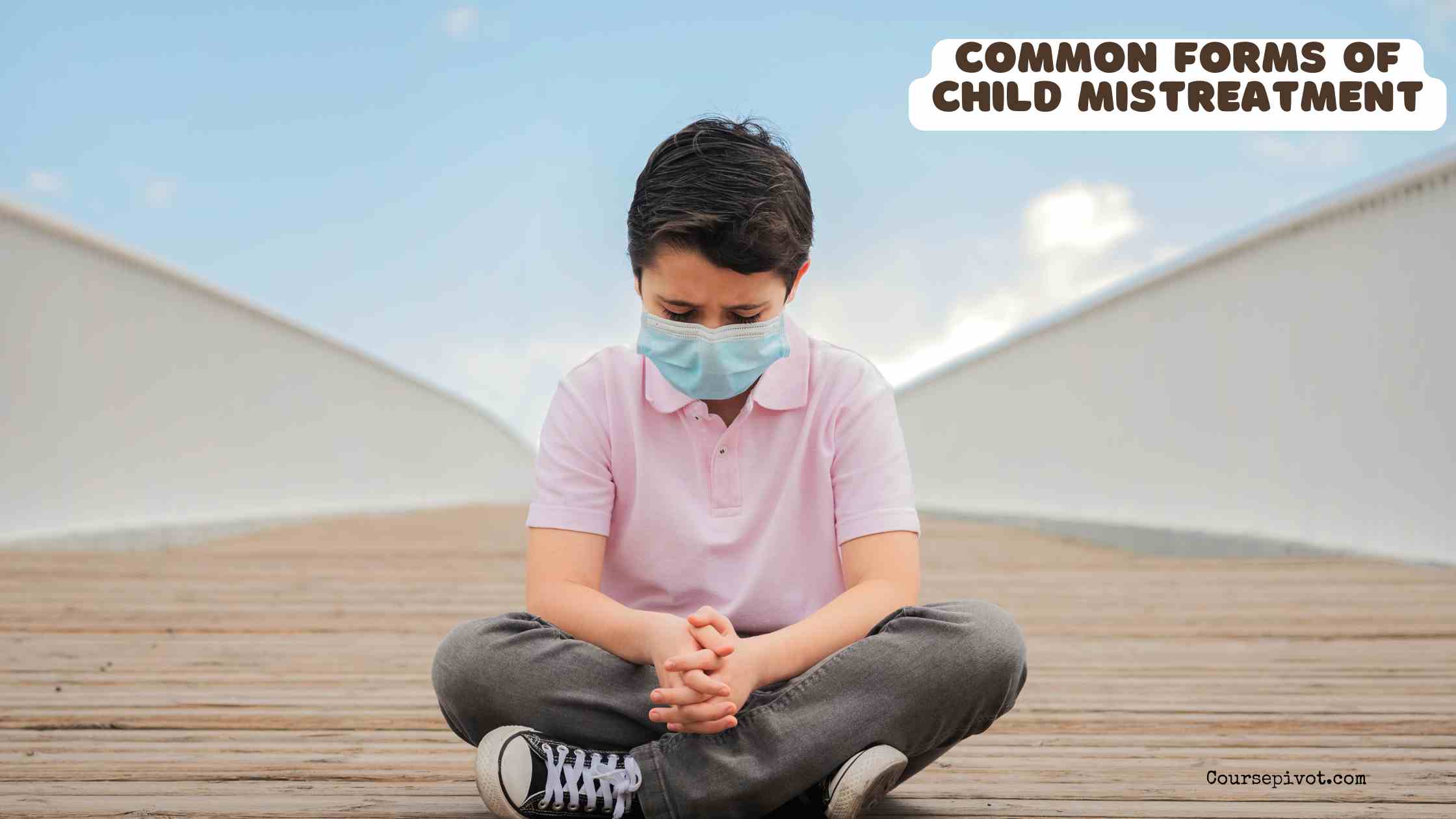
Common Forms of Child Mistreatment
Child mistreatment is a global issue that scars millions, with 3.6 million cases reported annually in the U.S. alone, according to 2023 data from the National Child Abuse and Neglect Data System. Beyond the headlines, mistreatment takes many forms, often lurking in subtle but devastating ways. This blog examines five prevalent types of child mistreatment, shedding light on their impact and why awareness matters.
Table of Contents
Physical Abuse
Physical abuse involves intentional harm through actions like hitting, burning, or shaking a child. It leaves visible marks—bruises, fractures, or burns—but the emotional toll runs deeper. The U.S. Department of Health and Human Services reported in 2023 that 17% of maltreatment cases involved physical abuse, affecting over 600,000 children yearly.
A child slapped for spilling juice might carry fear into adulthood. These incidents erode trust and self-worth. Physical abuse often escalates without intervention, making early detection critical to protecting vulnerable children.
Emotional Abuse
Emotional abuse attacks a child’s psyche through verbal assaults, humiliation, or rejection. Constant criticism, like calling a child “useless,” or withholding affection can cripple self-esteem. A 2024 study from the American Psychological Association noted that 30% of abused children faced emotional maltreatment, often harder to prove than physical harm.
Imagine a child mocked daily for their grades. They may internalize shame, struggling with anxiety or depression. Emotional abuse leaves no scars but shapes how children view themselves and their relationships long-term.
Neglect
Neglect occurs when caregivers fail to meet a child’s basic needs—food, shelter, medical care, or supervision. It’s the most common form of mistreatment, accounting for 76% of cases in 2023, per the Child Welfare Information Gateway. Chronic neglect, like leaving a child unfed or in filthy conditions, stunts physical and mental growth.
A child left alone for days might develop attachment issues. Neglect isn’t always intentional—poverty or addiction can play a role—but the harm is real. It signals to children that their needs don’t matter, fostering insecurity.
Sexual Abuse
Sexual abuse includes any sexual activity with a child, from molestation to exploitation. It’s a violation of trust, often perpetrated by someone known to the victim. The National Center for Victims of Crime reported in 2024 that 1 in 5 girls and 1 in 20 boys experience sexual abuse before age 18.
Read Why Drug Abuse Is More Common With Teens Whose Family Members Abuse Drugs
A child groomed by a relative may feel trapped by shame or threats. The trauma can lead to PTSD, trust issues, or risky behaviors later. Sexual abuse thrives in silence, making open conversations vital for prevention.
Exposure to Domestic Violence
Witnessing domestic violence is a form of mistreatment, exposing children to fear and instability. Seeing a parent abused or living in a volatile home disrupts emotional security. A 2023 study from the Journal of Family Violence estimated that 15 million children in the U.S. live in homes with domestic violence annually.
A child hiding during parental fights may develop anxiety or aggression. They learn unhealthy relationship patterns, carrying these into adulthood. This exposure is often overlooked but profoundly shapes a child’s worldview and safety.
Why Child Mistreatment Matters
Child mistreatment isn’t just a family issue—it’s a societal one. Abused or neglected children face higher risks of mental health disorders, with 50% developing conditions like depression, per a 2024 Child Trends report. They’re also more likely to struggle academically or enter the justice system, perpetuating cycles of hardship.
Awareness drives change. Recognizing these forms empowers communities to intervene, whether through reporting or support services. At Coursepivot, we’ve supported students exploring these topics in essays, highlighting the need for education on mistreatment’s impact. Addressing it protects children and builds healthier futures.
Practical Tips to Prevent and Address Mistreatment
Preventing child mistreatment starts with collective action. Here are steps to make a difference:
- Educate Yourself: Learn signs of abuse—unexplained injuries, withdrawal, or poor hygiene. Resources like Childhelp.org offer guidance.
- Build Support Networks: Connect families with community resources, like food banks or counseling, to ease stressors like poverty.
- Foster Open Dialogue: Teach children about body safety and encourage them to share concerns. Programs like Darkness to Light provide training.
- Report Concerns: Contact child protective services if you suspect mistreatment. Anonymous hotlines, like 1-800-4-A-CHILD, are available.
- Advocate for Prevention: Support policies funding mental health or parenting programs. Engage with organizations like Prevent Child Abuse America.
| Action | Impact | Resource/Example |
|---|---|---|
| Educate Yourself | Spots warning signs early | Childhelp.org, local workshops |
| Build Support | Reduces family stressors | Food banks, community centers |
| Foster Dialogue | Empowers children to speak up | Darkness to Light, school programs |
| Report Concerns | Triggers protective intervention | Child protective services, hotlines |
| Advocate | Strengthens systemic prevention | Prevent Child Abuse America |
These actions create safer environments. Schools and communities can offer workshops, while individuals can volunteer or donate to child welfare groups. At Coursepivot, we help students research these issues for term papers, fostering awareness through education.
Key Takeaways
Child mistreatment takes many forms—physical, emotional, neglect, sexual abuse, and exposure to domestic violence—each leaving lasting harm. These abuses disrupt children’s safety, self-worth, and development, with ripple effects into adulthood. By understanding these common types, we can act through education, reporting, and advocacy to protect vulnerable kids. Resources like Coursepivot’s tutoring support students exploring these topics, amplifying awareness. Together, we can break cycles of mistreatment, ensuring children grow in nurturing, secure environments.
Cite this article
You can copy and paste your preferred citation format below.
Martin, L. & Arquette, E.. (2025, August 1). Common Forms of Child Mistreatment. Coursepivot.com. https://coursepivot.com/blog/common-forms-of-child-mistreatment/


